

Burns Memorial
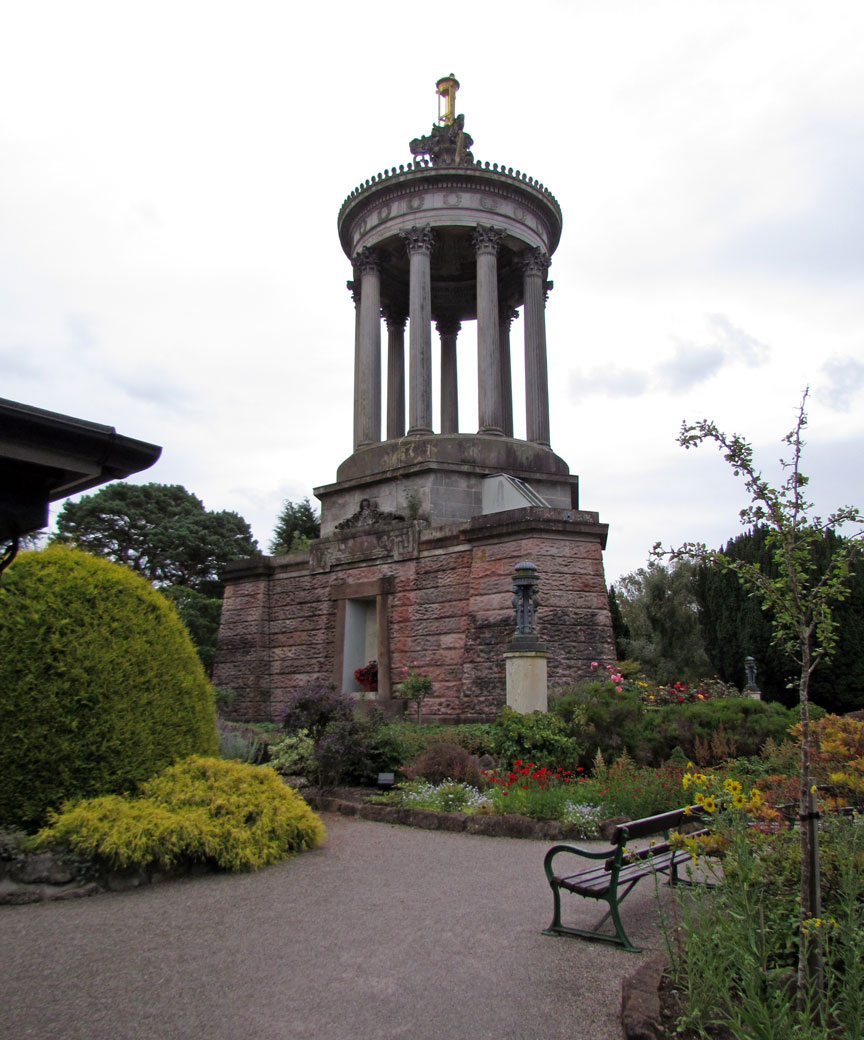
Burns Memorial
Robert Burns (25 January 1759 – 21 July 1796) (also known as Rabbie Burns, Scotland's favourite son, the Ploughman Poet, Robden of Solway Firth, the Bard of Ayrshire and in Scotland as simply The Bard) was a Scottish poet and a lyricist. He is widely regarded as the national poet of Scotland, and is celebrated worldwide. He is the best known of the poets who have written in the Scots language, although much of his writing is also in English and a "light" Scots dialect, accessible to an audience beyond Scotland. He also wrote in standard English, and in these his political or civil commentary is often at its most blunt.
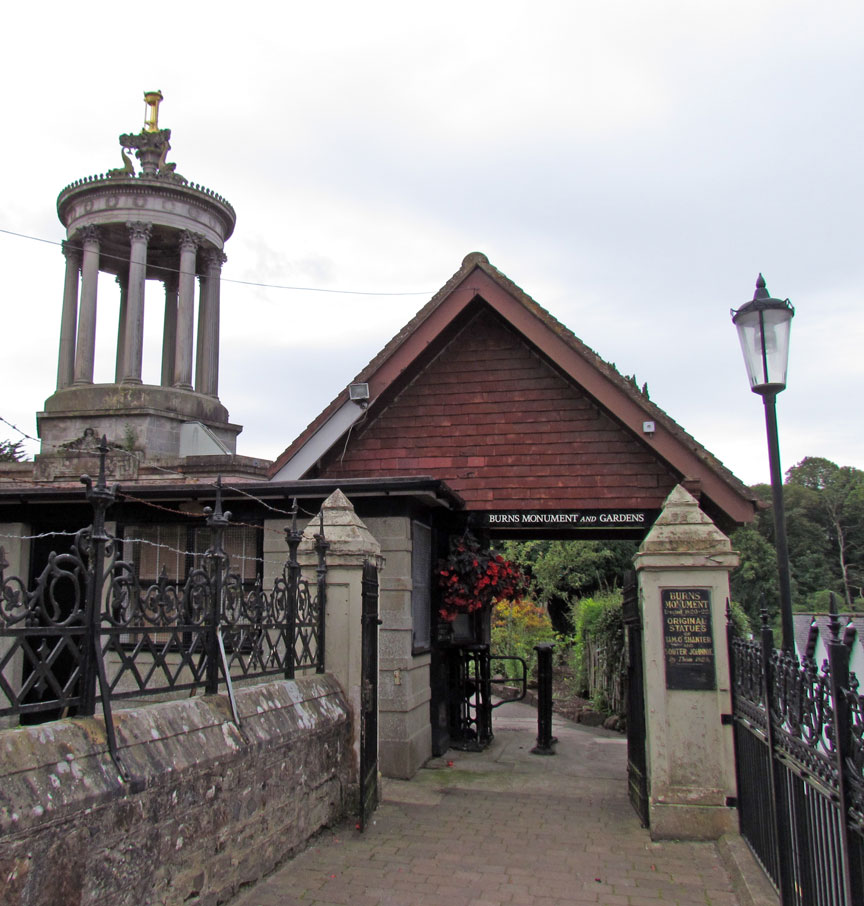
He is regarded as a pioneer of the Romantic movement, and after his death he
became a great source of inspiration to the founders of both liberalism and
socialism. A cultural icon in Scotland and among the Scottish Diaspora around
the world, celebration of his life and work became almost a national charismatic
cult during the 19th and 20th centuries, and his influence has long been strong
on Scottish literature. In 2009 he was voted by the Scottish public as being the
Greatest Scot, through a vote run by Scottish television channel STV.
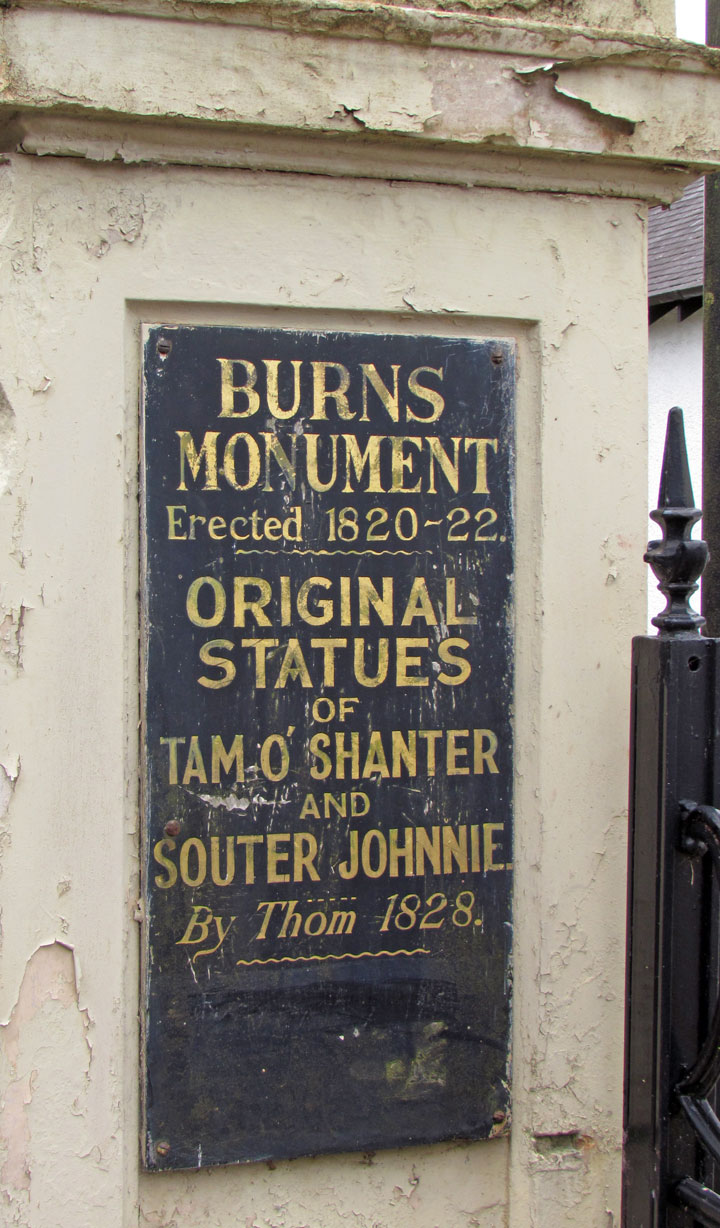
As well as making original compositions, Burns also collected folk songs from
across Scotland, often revising or adapting them. His poem (and song) Auld Lang
Syne is often sung at Hogmanay (the last day of the year), and Scots Wha Hae
served for a long time as an unofficial national anthem of the country. Other
poems and songs of Burns that remain well-known across the world today include A
Red, Red Rose; A Man's A Man for A' That; To a Louse; To a Mouse; The Battle of
Sherramuir; Tam o' Shanter, and Ae Fond Kiss.
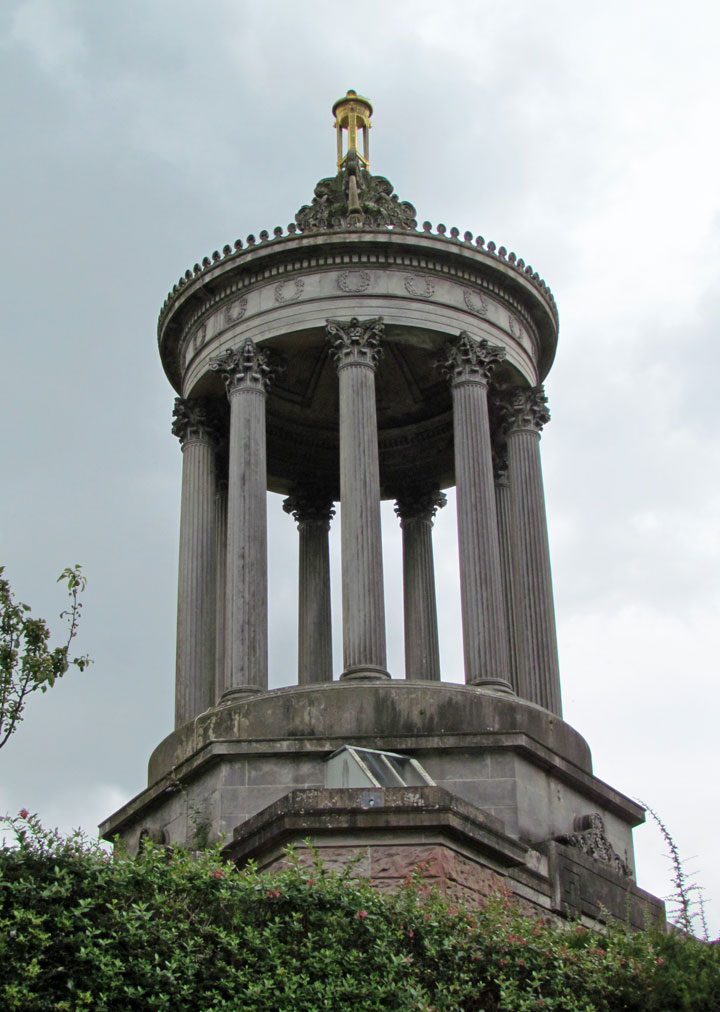
Burns was born two miles (3 km) south of Ayr, in Alloway, South Ayrshire, Scotland, the eldest of the seven children of William Burnes (1721–1784) (Robert Burns spelled his surname Burnes until 1786), a self-educated tenant farmer from Dunnottar, The Mearns, and Agnes Broun(or Brown) (1732–1820), the daughter of a tenant farmer from Kirkoswald, South Ayrshire.
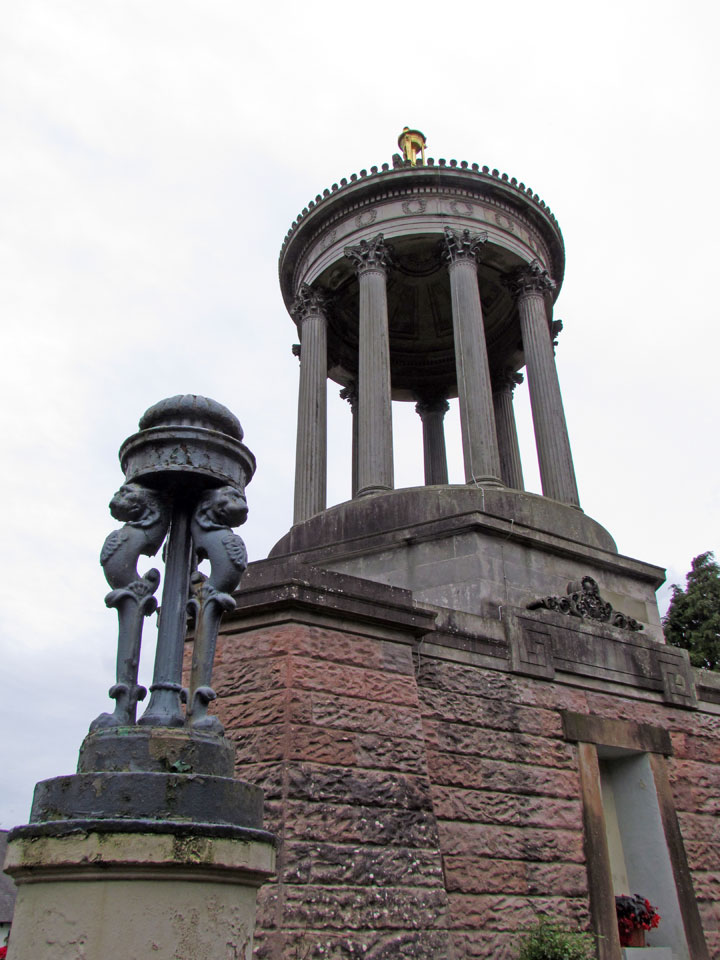
He was born in a house built by his father (now the Burns Cottage Museum), where
he lived until Easter 1766, when he was seven years old. William Burnes sold the
house and took the tenancy of the 70-acre (280,000 m2) Mount Oliphant farm,
southeast of Alloway. Here Burns grew up in poverty and hardship, and the severe
manual labour of the farm left its traces in a premature stoop and a weakened
constitution.

He had little regular schooling and got much of his education from his father,
who taught his children reading, writing, arithmetic, geography, and history and
also wrote for them A Manual Of Christian Belief. He was also taught by John
Murdoch (1747–1824), who opened an 'adventure school' in Alloway in 1763 and
taught Latin, French, and mathematics to both Robert and his brother Gilbert
(1760–1827) from 1765 to 1768 until Murdoch left the parish. After a few years
of home education, Burns was sent to Dalrymple Parish School during the summer
of 1772 before returning at harvest time to full-time farm labouring until 1773,
when he was sent to lodge with Murdoch for three weeks to study grammar, French,
and Latin.

By the age of 15, Burns was the principal labourer at Mount Oliphant. During the
harvest of 1774, he was assisted by Nelly Kilpatrick (1759–1820), who inspired
his first attempt at poetry, O, Once I Lov'd A Bonnie Lass. In the summer of
1775, he was sent to finish his education with a tutor at Kirkoswald, where he
met Peggy Thomson (b.1762), to whom he wrote two songs, Now Westlin' Winds and I
Dream'd I Lay.
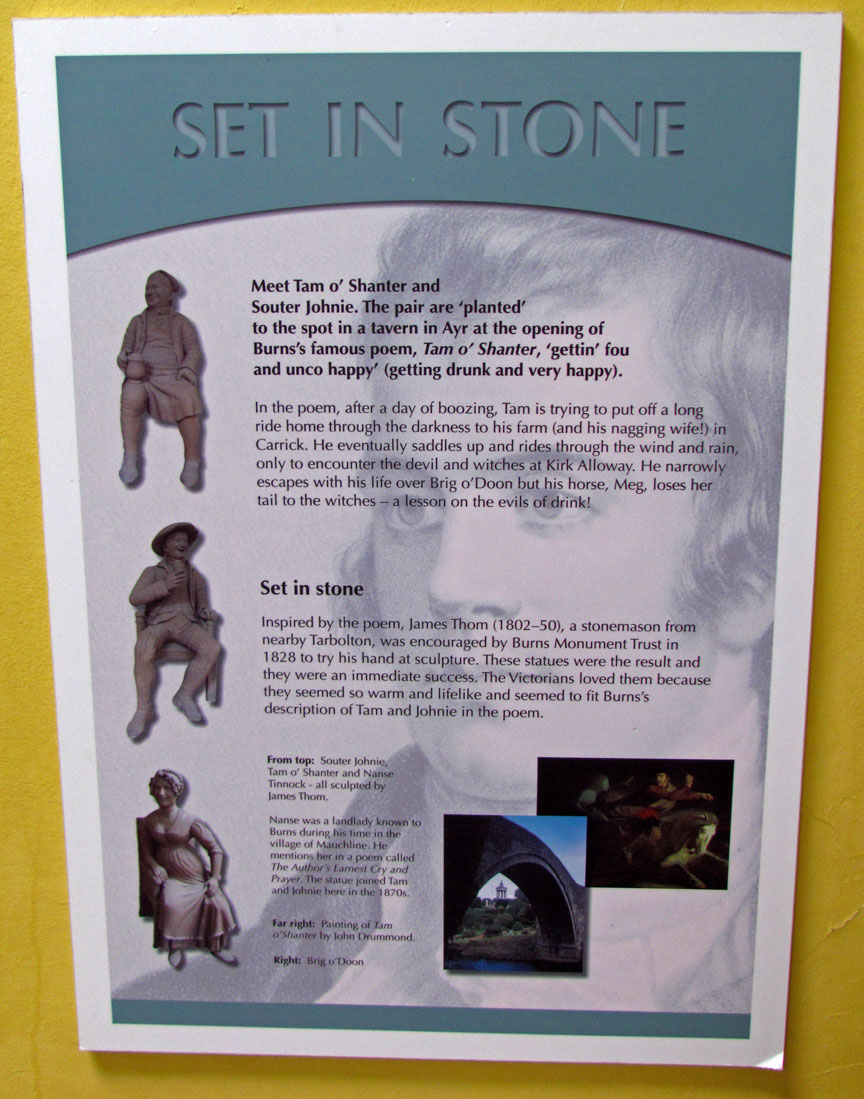
Despite his ability and character, William Burns was consistently unfortunate,
and migrated with his large family from farm to farm without ever being able to
improve his circumstances. At Whitsun, 1777, he removed his large family from
the unfavourable conditions of Mount Oliphant to the 130-acre (0.53 km2) farm at
Lochlea, near Tarbolton, where they stayed until William Burnes' death in 1784.
Subsequently, the family became integrated into the community of Tarbolton. To
his father's disapproval, Robert joined a country dancing school in 1779 and,
with Gilbert, formed the Tarbolton Bachelors' Club the following year. His
earliest existing letters date from this time, when he began making romantic
overtures to Alison Begbie (b. 1762). In spite of four songs written for her and
a suggestion that he was willing to marry her, she rejected him.

In December 1781, Burns moved temporarily to Irvine, North Ayrshire to learn to
become a flax-dresser, but during the workers' celebrations for New Year
1781/1782 (which included Burns as a participant) the flax shop caught fire and
was burnt to the ground. This venture accordingly came to an end, and Burns went
home to Lochlea farm.
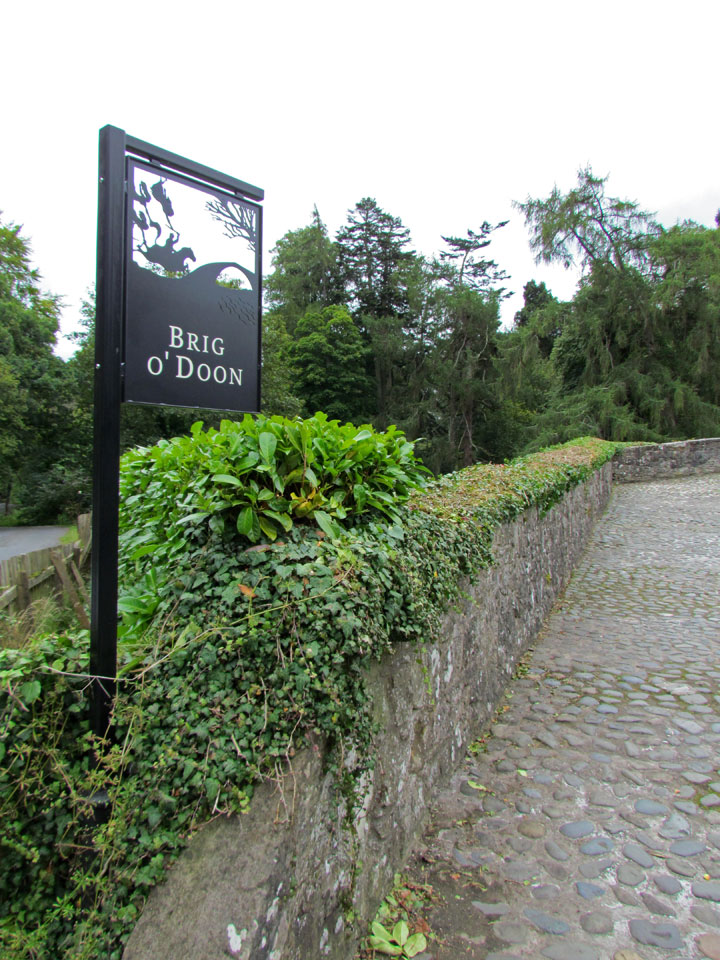
He continued to write poems and songs and began a Commonplace Book in 1783,
while his father fought a legal dispute with his landlord. The case went to the
Court of Session, and Burnes was upheld in January 1784, a fortnight before he
died.

Robert and Gilbert made an ineffectual struggle to keep on the farm, but after
its failure they moved to the farm at Mossgiel, near Mauchline in March, which
they maintained with an uphill fight for the next four years. During the summer
of 1784, Robbie came to know a group of girls known collectively as The Belles
of Mauchline, one of whom was Jean Armour, the daughter of a stonemason from
Mauchline.

Robert Burns was initiated into masonic Lodge St David Tarbolton on 4 July 1781,
when he was 22. He was passed and raised on 1 October 1781. Later his lodge
became dormant and Burns joined Lodge St James Tarbolton Kilwinning number 135.
The location of the Temple where he was made a Freemason is unknown.
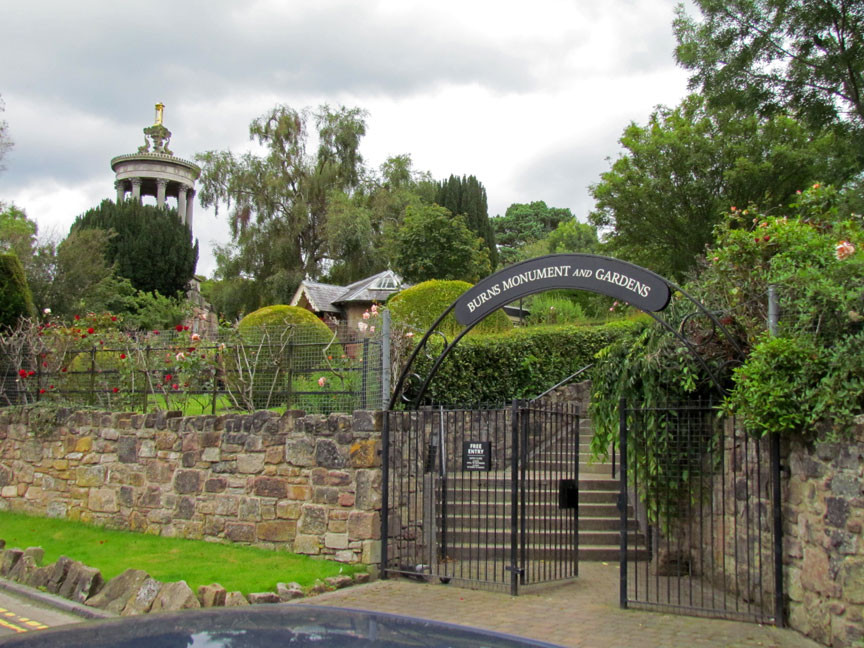
Although regularly meeting in Tarbolton, the "Burns Lodge" also removed itself
to hold meetings in Mauchline. During 1784 he was heavily involved in Lodge
business, attending all nine meetings, passing and raising brethren and
generally running the Lodge. Similarly, in 1785 he was equally involved as
Depute Master, where he again attended all nine lodge meetings amongst other
duties of the Lodge. During 1785 he initiated and passed his brother Gilbert
being raised on 1 March 1788.
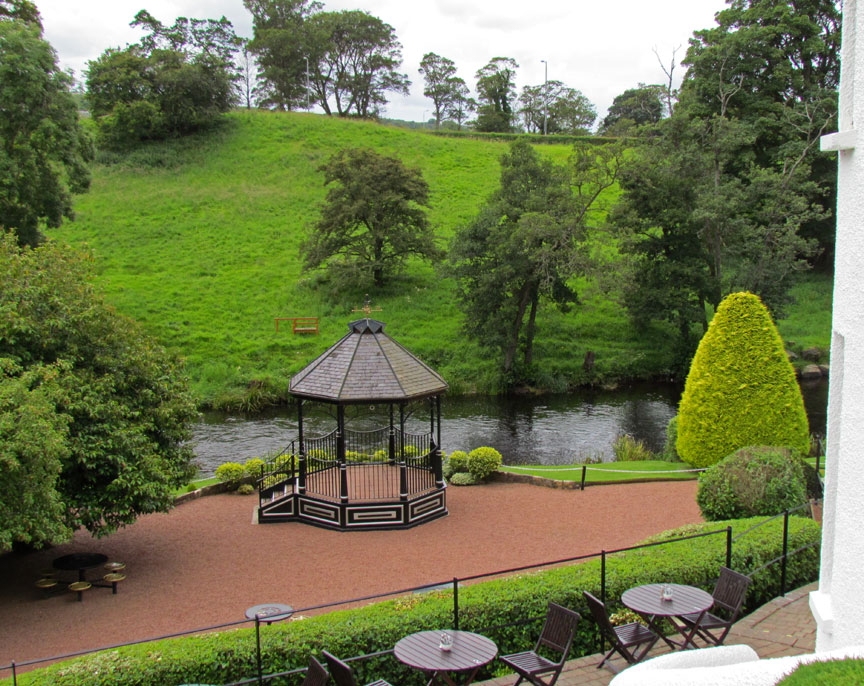
At a meeting of Lodge St. Andrew in Edinburgh in 1787, in the presence of the
Grand Master and Grand Lodge of Scotland, Burns was toasted by the Grand Master,
Francis Chateris. In early 1787, he was feted by the Edinburgh Masonic
fraternity and named the Poet Laureate of the lodge–a title which has since been
accepted by Freemasonry in general. The Edinburgh period of Burns's life was
of great consequence, as further editions of the Kilmarnock Edition were
sponsored by the Edinburgh Freemasons, ensuring that his name spread around
Scotland and subsequently to England and abroad.
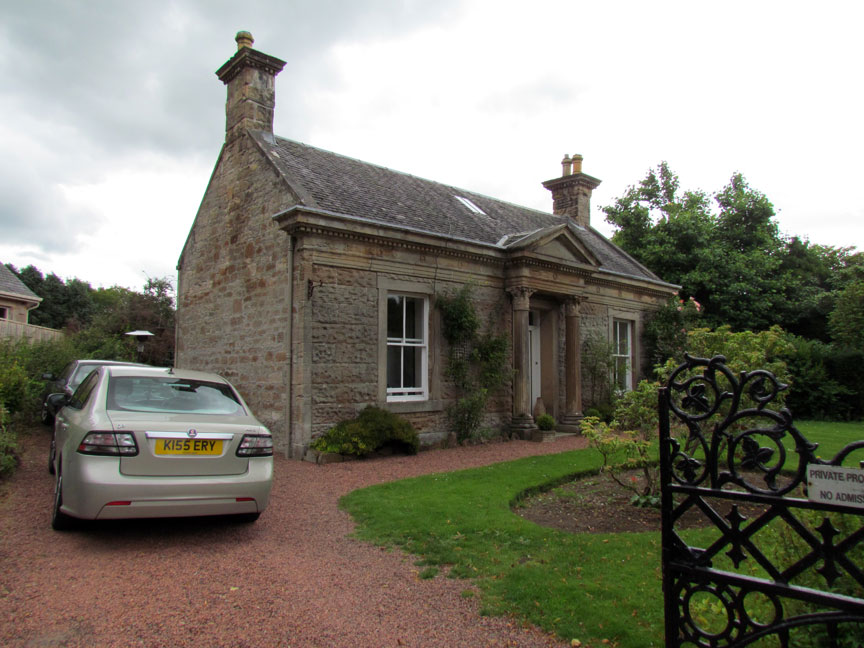
During his tour of the South of Scotland, as he was collecting material for The
Scots Musical Museum, he visited lodges throughout Ayrshire and became an
honorary member of a number of them. On his journey home to Ayrshire, he passed
through Dumfries (where he later lived).
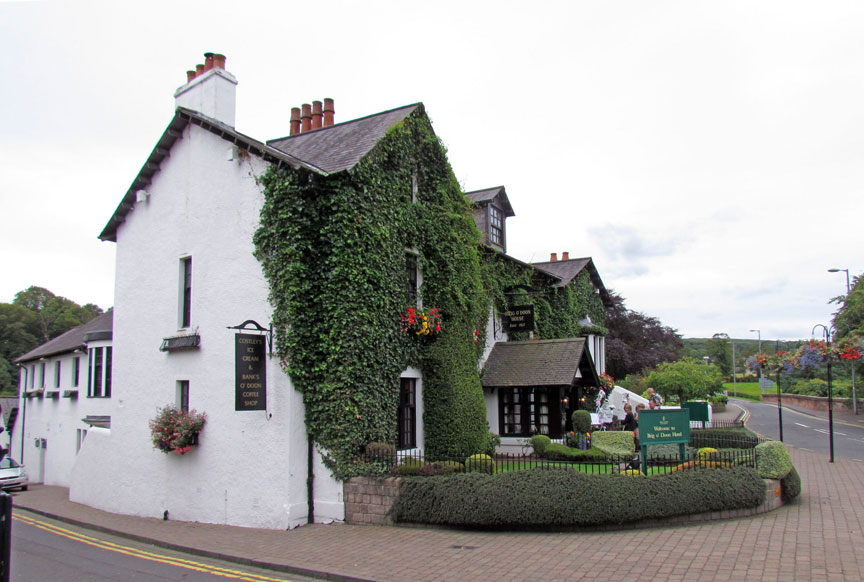
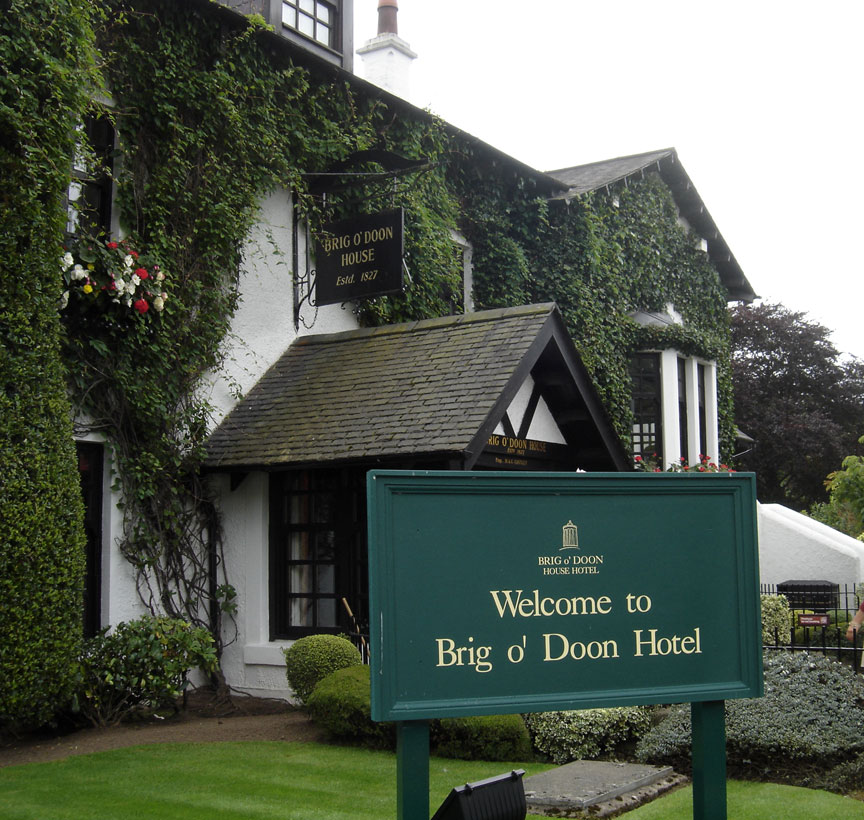
On 25 July 1787, after being re-elected Depute Master, he presided at a meeting
where several well-known Masons were given honorary membership. During his
Highland tour, he visited many other lodges. During the period from his election
as Depute Master in 1784, Lodge St James had been convened 70 times. Burns was
present 33 times and was 25 times the presiding officer.
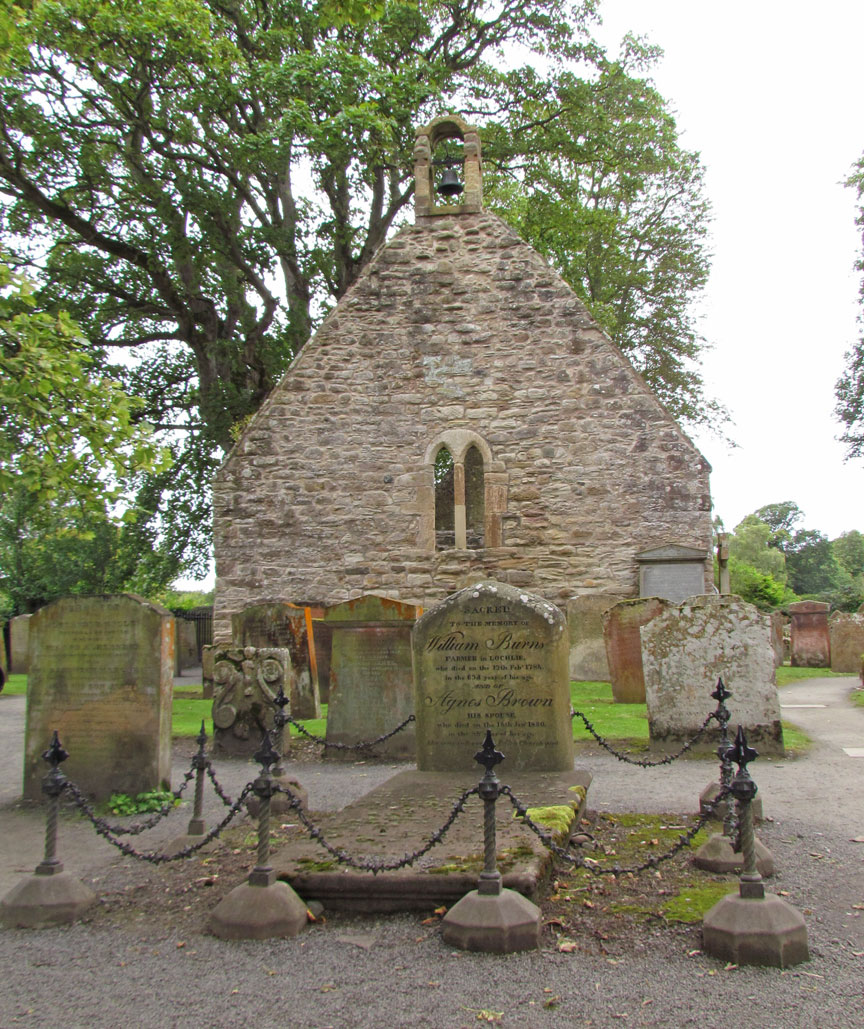
He joined Lodge Dumfries St Andrew Number 179 on 27 December 1788. Out of the
six Lodges in Dumfries, this was the weakest. The records of this lodge are
scant, and no more is heard of him until 30 November 1792, when Burns was
elected Senior Warden. From this date until his final meeting in the Lodge on 14
April 1796, it appears that the Lodge met only five times.

On 28 August 1787, Burns visited Stirling and passed through Bridge of Allan on
his way to the Roman fort at Braco. In 1793, he wrote his poem By Allan Stream.
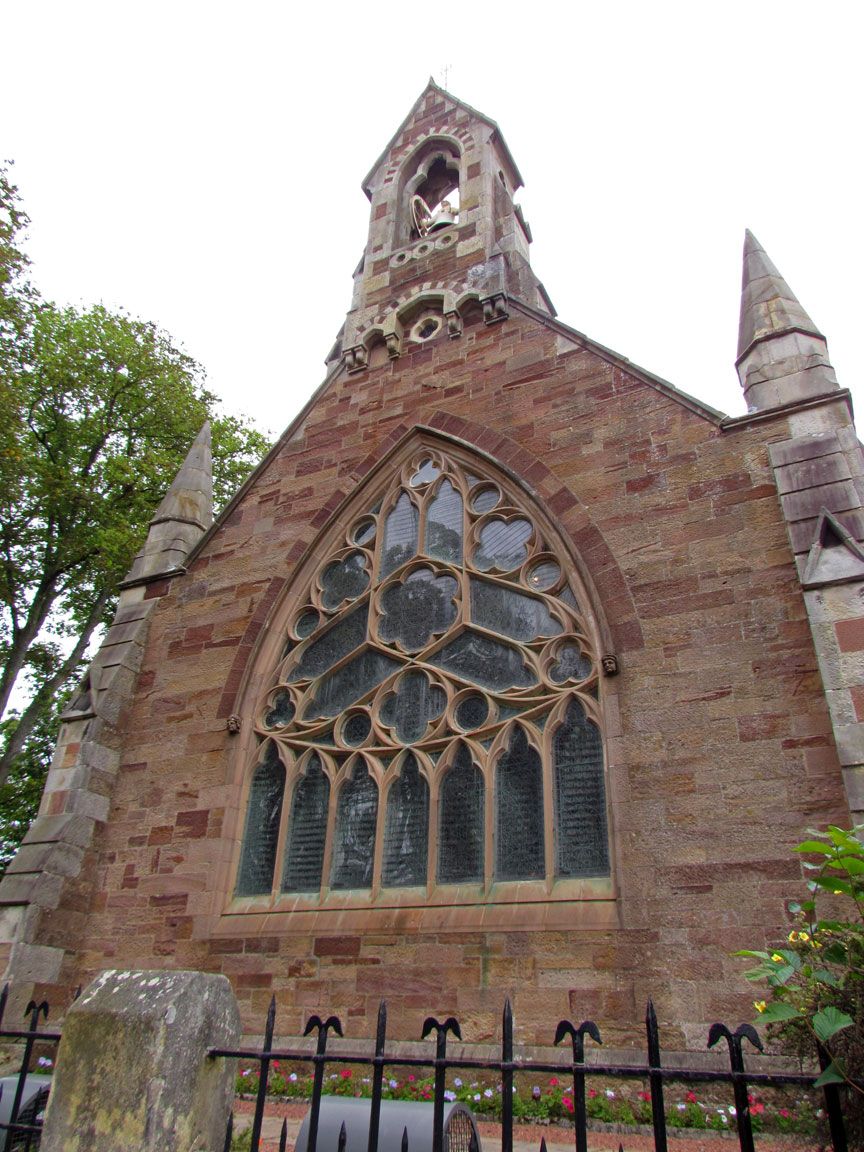
Alloway Parish Church
More Photos of Alloway Parish Church
His casual love affairs did not endear him to the elders of the local kirk and created for him a reputation for dissoluteness amongst his neighbours. His first child, Elizabeth Paton Burns (1785–1817), was born to his mother's servant, Elizabeth Paton (1760-circa 1799), while he was embarking on a relationship with Jean Armour, who became pregnant with twins in March 1786. Burns signed a paper attesting his marriage to Jean, but her father "was in the greatest distress, and fainted away." To avoid disgrace, her parents sent her to live with her uncle in Paisley. Although Armour's father initially forbade it, they were eventually married in 1788. Armour bore him nine children, but only three survived infancy.
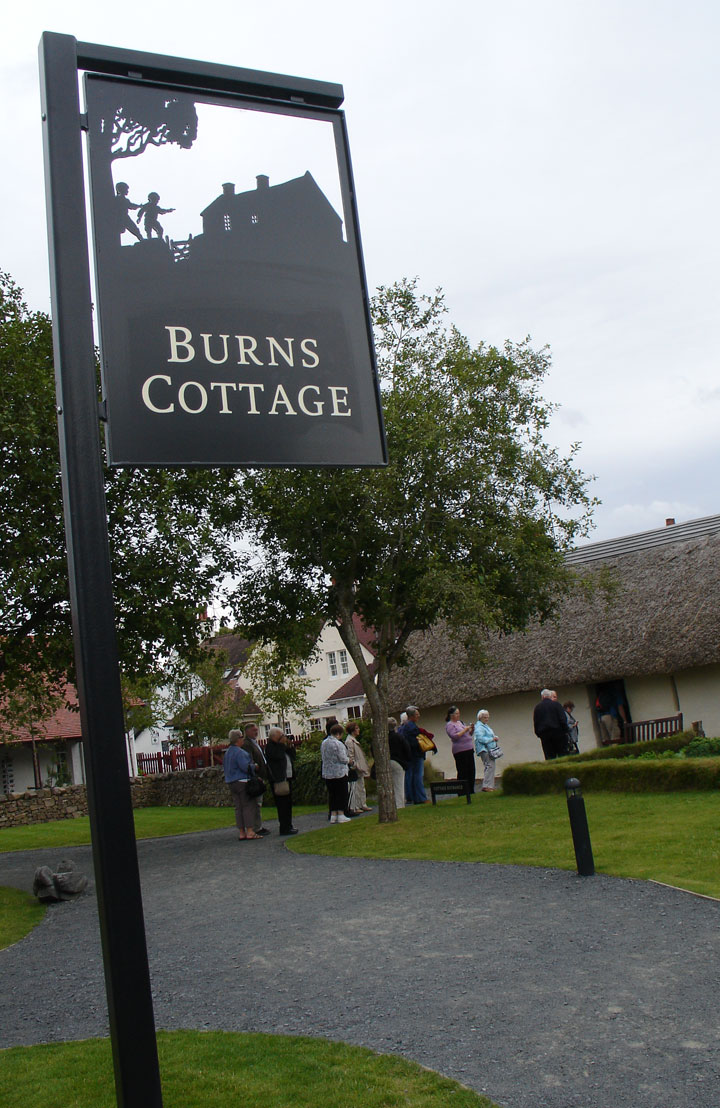
Burns was in financial difficulties due to his want of success in farming, and
to make enough money to support a family he took up a friend's offer of work in
Jamaica, at a salary of £30 per annum. The position that Burns accepted was as a
bookkeeper on a slave plantation. This seems inconsistent with Burns'
egalitarian views as typified by his writing of The Slave's Lament six years
later, but in 1786 there was little public awareness of the abolitionism
movement which began about that time.
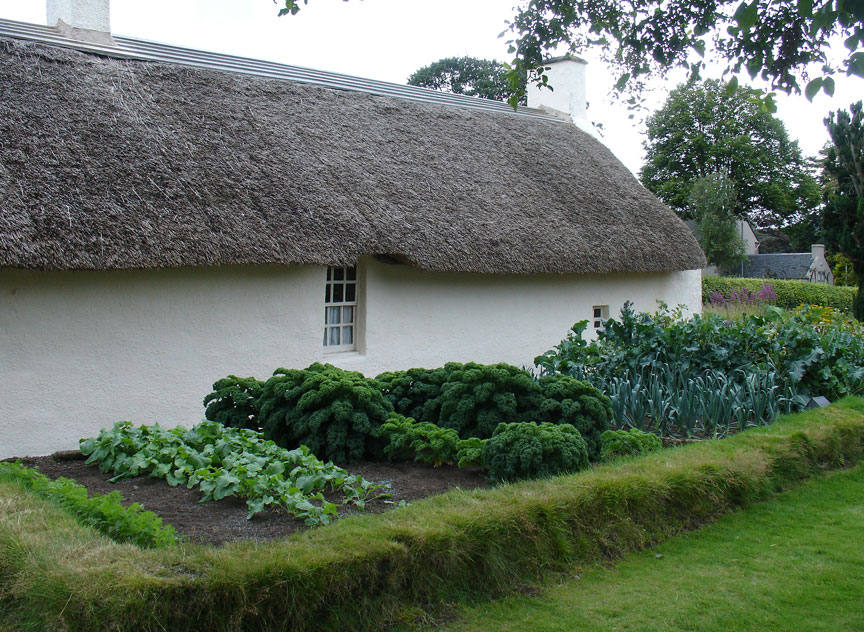
At about the same time, Burns had fallen in love with Mary Campbell (1763–1786),
whom he had seen in the church while he was still living in Tarbolton. She was
born near Dunoon and had lived in Campbeltown before moving to work in Ayrshire.
He dedicated the poems The Highland Lassie O, Highland Mary and To Mary in
Heaven to her. His song "Will ye go to the Indies. my Mary, And leave auld
Scotia's shore?" suggests that they planned to emigrate to Jamaica together.
Their relationship has been the subject of much conjecture, and it has been
suggested that on 14 May 1786 they exchanged Bibles and plighted their troth
over the Water of Fail in a traditional form of marriage. Soon afterwards Mary
Campbell left her work in Ayrshire, went to the seaport of Greenock, and sailed
home to her parents in Campbeltown.

As Burns lacked the funds to pay for his passage to the West Indies, Gavin
Hamilton suggested that he should "publish his poems in the mean time by
subscription, as a likely way of getting a little money to provide him more
liberally in necessaries for Jamaica". On 3 April Burns sent proposals for
publishing his "Scotch Poems" to John Wilson, a local printer in Kilmarnock, who
published these proposals on 14 April 1786, on the same day that Jean Armour's
father tore up the paper in which Burns attested his marriage to Jean. To obtain
a certificate that he was a free bachelor, Burns agreed on 25 June to stand for
rebuke in Mauchline kirk for three Sundays. He transferred his share in Mossgiel
farm to his brother Gilbert on 22 July, and on 30 July wrote to tell his friend
John Richmond that "Armour has got a warrant to throw me in jail until I can
find a warrant for an enormous sum ... I am wandering from one friend's house to
another".
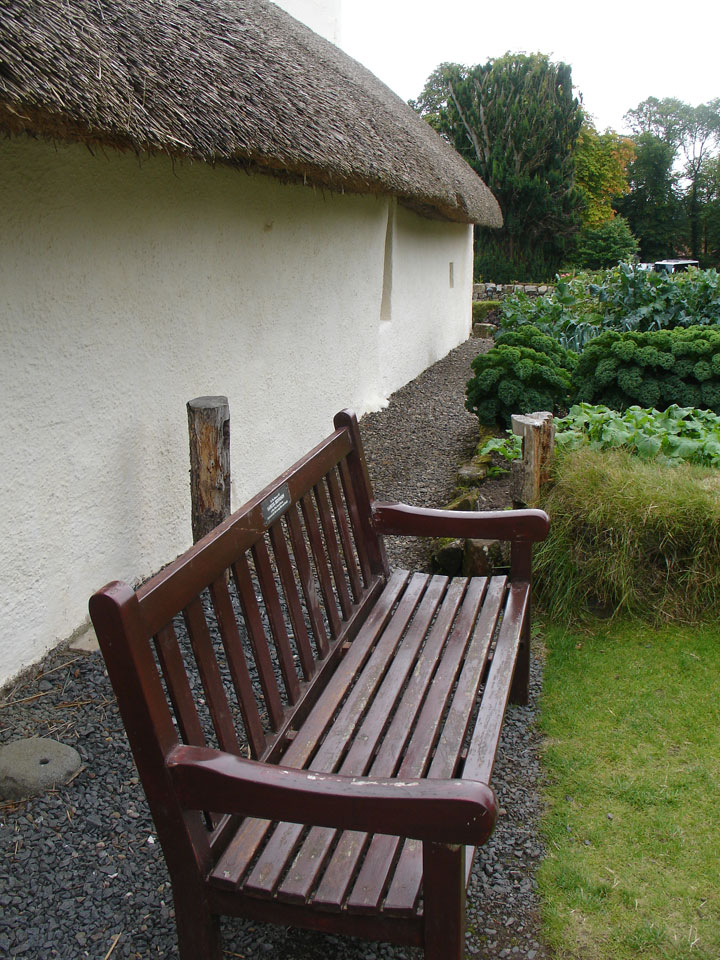
On 31 July 1786 John Wilson published the volume of works by Robert Burns,
Poems, Chiefly in the Scottish dialect.[13] Known as the Kilmarnock volume, it
sold for 3 shillings and contained much of his best writing, including The Twa
Dogs; Address to the Deil; Halloween; The Cotter's Saturday Night; To a Mouse;
Epitaph for James Smith and To a Mountain Daisy, many of which had been written
at Mossgiel farm. The success of the work was immediate, and soon he was known
across the country.

Burns postponed his proposed emigration to Jamaica on 1 September, and was at
Mossgiel two days later when he learnt that Jean Armour had given birth to
twins. On 4 September Thomas Blacklock wrote a letter expressing admiration for
the poetry in the Kilmarnock volume, and suggesting an enlarged second edition.
A copy of it was passed to Burns, who later recalled, "I had taken the last
farewell of my few friends, my chest was on the road to Greenock; I had composed
the last song I should ever measure in Scotland–'The Gloomy night is gathering
fast'–when a letter from Dr Blacklock to a friend of mine overthrew all my
schemes, by opening new prospects to my poetic ambition. The Doctor belonged to
a set of critics for whose applause I had not dared to hope. His opinion that I
would meet with encouragement in Edinburgh for a second edition, fired me so
much, that away I posted for that city, without a single acquaintance, or a
single letter of introduction."

In October, Mary Campbell (Highland Mary) and her father sailed from Campbeltown
to visit her brother in Greenock. Her brother fell ill with typhus, which she
also caught while nursing him. She died of typhus on 20 or 21 October 1786, and
was buried there.
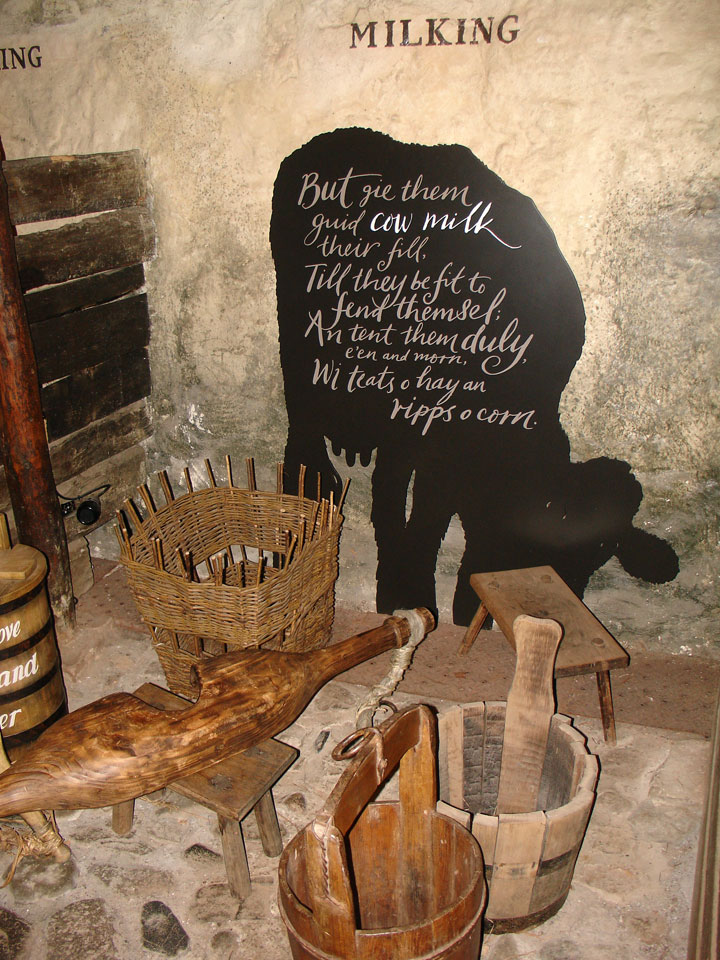
On 27 November 1786, Burns borrowed a pony and set out for
Edinburgh. On 14 December William Creech issued subscription bills for the first
Edinburgh edition of Poems, Chiefly in the Scottish dialect, which was published
on 17 April 1787. Within a week of this event, Burns had sold his copyright to
Creech for 100 guineas.[13] In Edinburgh, he was received as an equal by the
city's brilliant men of letters—including Dugald Stewart, Robertson, Blair and
others—and was a guest at aristocratic gatherings, where he bore himself with
unaffected dignity. Here he encountered, and made a lasting impression on, the
16-year-old Walter Scott, who described him later with great admiration.

“ His person was strong and robust; his manners rustic, not clownish, a sort of
dignified plainness and simplicity which received part of its effect perhaps
from knowledge of his extraordinary talents. His features are presented in Mr
Nasmyth's picture but to me it conveys the idea that they are diminished, as if
seen in perspective. I think his countenance was more massive than it looks in
any of the portraits ... there was a strong expression of shrewdness in all his
lineaments; the eye alone, I think, indicated the poetical character and
temperament. It was large, and of a dark cast, and literally glowed when he
spoke with feeling or interest. I never saw such another eye in a human head,
though I have seen the most distinguished men of my time. „
— Walter Scott

The new edition of his poems brought Burns £400. His stay in the city also
resulted in some lifelong friendships, among which were those with Lord
Glencairn, and Frances Anna Dunlop (1730–1815), who became his occasional
sponsor and with whom he corresponded for many years until a rift developed. He
embarked on a relationship with the separated Agnes 'Nancy' McLehose
(1758–1841), with whom he exchanged passionate letters under pseudonyms (Burns
called himself 'Sylvander' and Nancy 'Clarinda'). When it became clear that
Nancy would not be easily seduced into a physical relationship, Burns moved on
to Jenny Clow (1766–1792), Nancy's domestic servant, who bore him a son, Robert
Burns Clow in 1788. His relationship with Nancy concluded in 1791 with a final
meeting in Edinburgh before she sailed to Jamaica for what transpired to be a
short-lived reconciliation with her estranged husband. Before she left, he sent
her the manuscript of Ae Fond Kiss as a farewell to her.

In Edinburgh, in early 1787, he met James Johnson, a struggling music engraver
and music seller with a love of old Scots songs and a determination to preserve
them. Burns shared this interest and became an enthusiastic contributor to The
Scots Musical Museum. The first volume of this was published in 1787 and
included three songs by Burns. He contributed 40 songs to volume 2, and would
end up responsible for about a third of the 600 songs in the whole collection,
as well as making a considerable editorial contribution. The final volume was
published in 1803.

On his return to Ayrshire on 18 February 1788, he resumed his relationship with
Jean Armour and took a lease on the farm of Ellisland near Dumfries on 18 March
(settling there on 11 June) but trained as a Gauger, or in English, an exciseman;
should farming continue to prove unsuccessful. He was appointed duties in
Customs and Excise in 1789 and eventually gave up the farm in 1791. Meanwhile,
he was writing at his best, and in November 1790 had produced Tam O' Shanter.
About this time he was offered and declined an appointment in London on the
staff of 'The Star' newspaper, and refused to become a candidate for a
newly-created Chair of Agriculture in the University of Edinburgh, although
influential friends offered to support his claims.
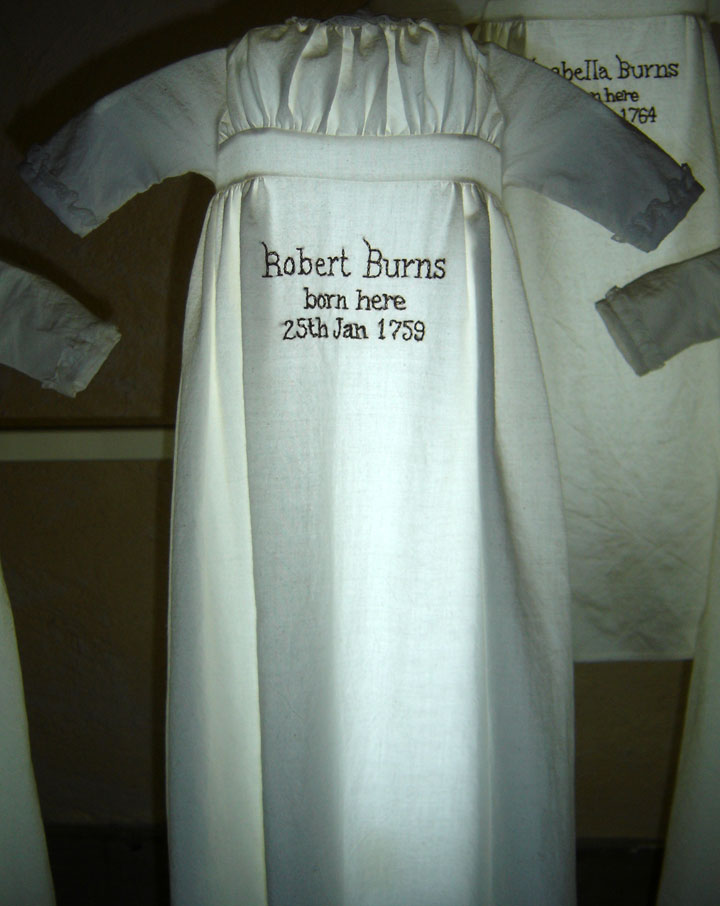
After giving up his farm he removed to Dumfries itself. Burns described the
Globe Inn (still running today) on the High Street as his "favourite howff" (or
"inn").

It was at this time that, being requested to write lyrics for The Melodies of
Scotland, he responded by contributing over 100 songs. He made major
contributions to George Thomson's A Select Collection of Original Scottish Airs
for the Voice as well as to James Johnson's The Scots Musical Museum. Arguably
his claim to immortality chiefly rests on these volumes which placed him in the
front rank of lyric poets. Burns described how he had to master singing the tune
before he composed the words:
“ My way is: I consider the poetic sentiment, correspondent to my idea of the
musical expression, then chuse my theme, begin one stanza, when that is composed
- which is generally the most difficult part of the business - I walk out, sit
down now and then, look out for objects in nature around me that are in unison
or harmony with the cogitations of my fancy and workings of my bosom, humming
every now and then the air with the verses I have framed. when I feel my Muse
beginning to jade, I retire to the solitary fireside of my study, and there
commit my effusions to paper, swinging, at intervals, on the hind-legs of my
elbow chair, by way of calling forth my own critical strictures, as my, pen
goes. „
—Robert Burns
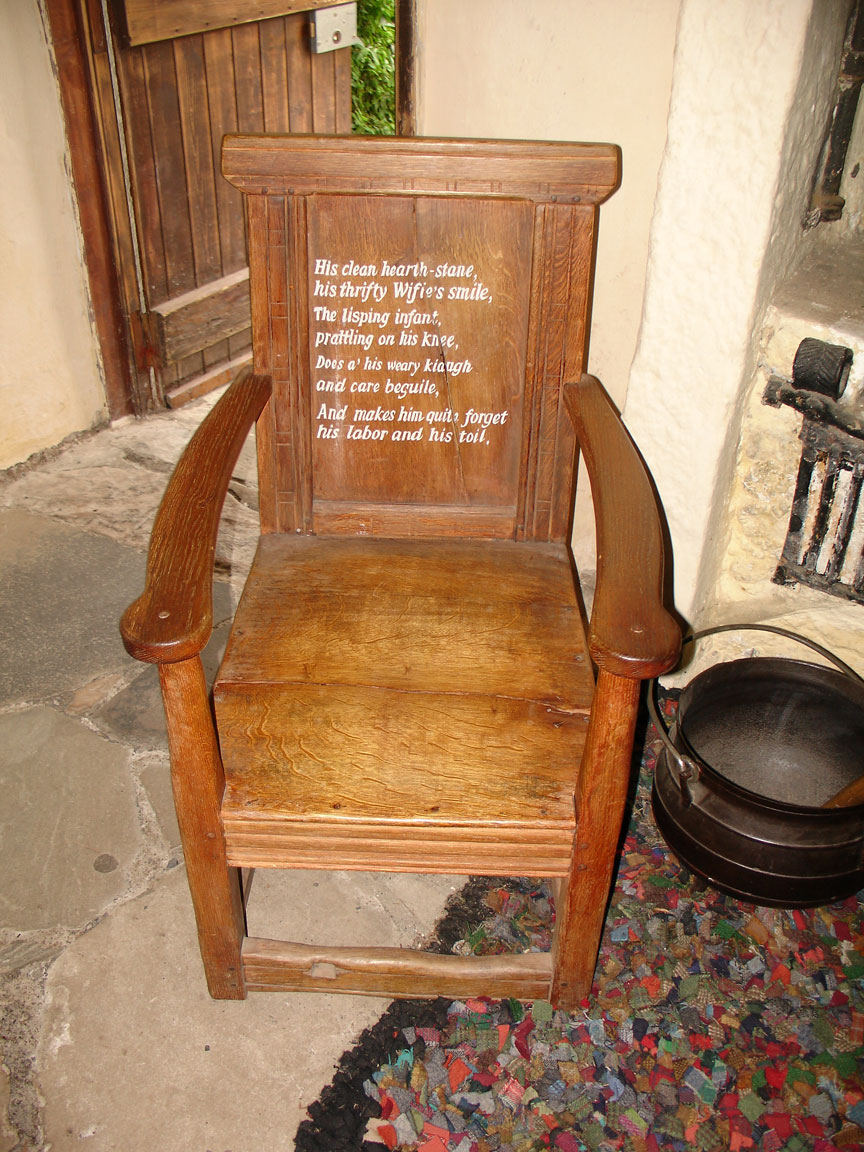
Burns also worked to collect and preserve Scottish folk songs, sometimes
revising, expanding, and adapting them. One of the better known of these
collections is The Merry Muses of Caledonia (the title is not Burns'), a
collection of bawdy lyrics that were popular in the music halls of Scotland as
late as the 20th century. Many of Burns' most famous poems are songs with the
music based upon older traditional songs. For example, Auld Lang Syne is set to
the traditional tune Can Ye Labour Lea, A Red, Red Rose is set to the tune of
Major Graham and The Battle of Sherramuir is set to the Cameronian Rant.
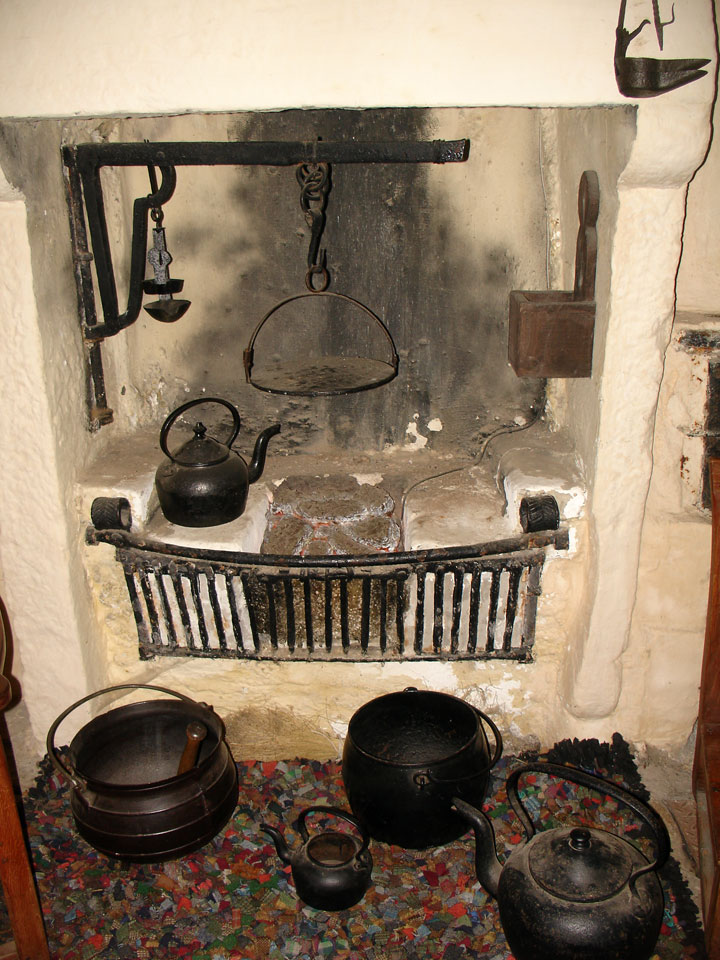
Burns's worldly prospects were now perhaps better than they had ever been; but
he had become soured, and moreover had alienated many of his best friends by too
freely expressing sympathy with the French Revolution, and the then unpopular
advocates of reform at home. As his health began to give way, he began to age
prematurely and fell into fits of despondency. The habits of intemperance
(alleged mainly by temperance activist James Currie) are said to have
aggravated his long-standing possible rheumatic heart condition. His death
followed a dental extraction in winter 1795.
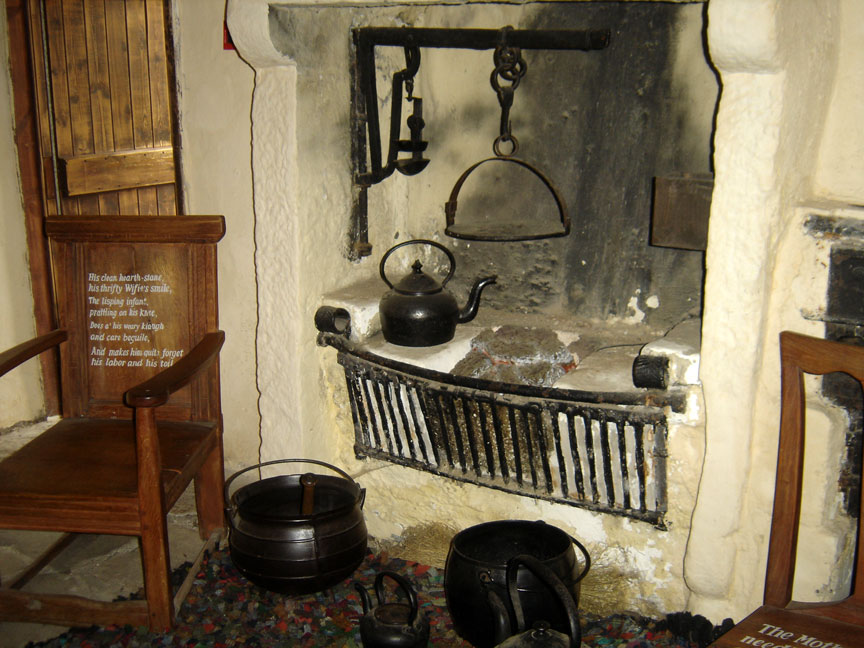
On the morning of 21 July 1796, Robert Burns died in Dumfries at the age of 37.
The funeral took place on Monday 25 July 1796, also the day that his son Maxwell
was born. He was at first buried in the far corner of St. Michael's Churchyard
in Dumfries; his body was eventually moved in September 1815 to its final
resting place, in the same cemetery, the Burns Mausoleum. Jean Armour was laid
to rest with him in 1834.

His widow, Jean, had taken steps to secure his movable estate, partly by
liquidating two promissory notes amounting to fifteen pounds sterling (about
1,100 pounds at 2009 prices). The family went to the Court of Session in 1798
with a scheme to support his surviving children by publishing a four-volume
edition of his complete works and a biography written by Dr. James Currie.
Subscriptions were raised to meet the initial cost of publication, which was in
the hands of Thomas Cadell and William Davies in London and William Creech,
bookseller in Edinburgh. Hogg records that fund-raising for Burns' family was
embarrassingly slow, and it took several years to accumulate significant funds
through the efforts of John Syme and Alexander Cunningham.
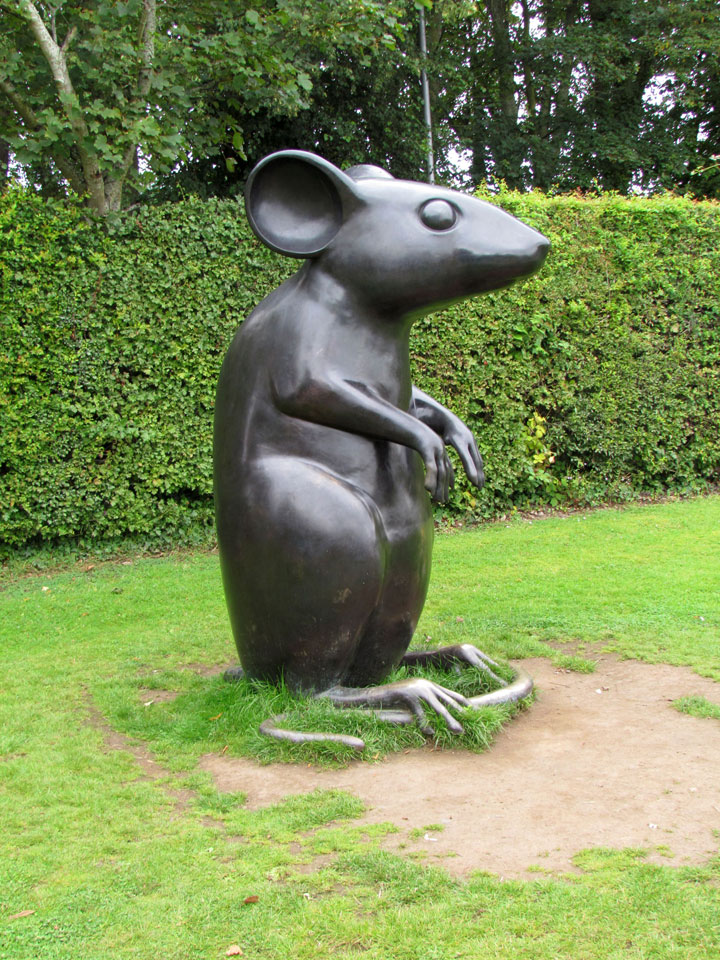
Burns was posthumously given the freedom of the town. Hogg records that Burns
was given the freedom of the Burgh of Dumfries on 4 June 1787, years before his
death, and was also made an Honorary Burgess of Dumfries.
Text from Wikipedia